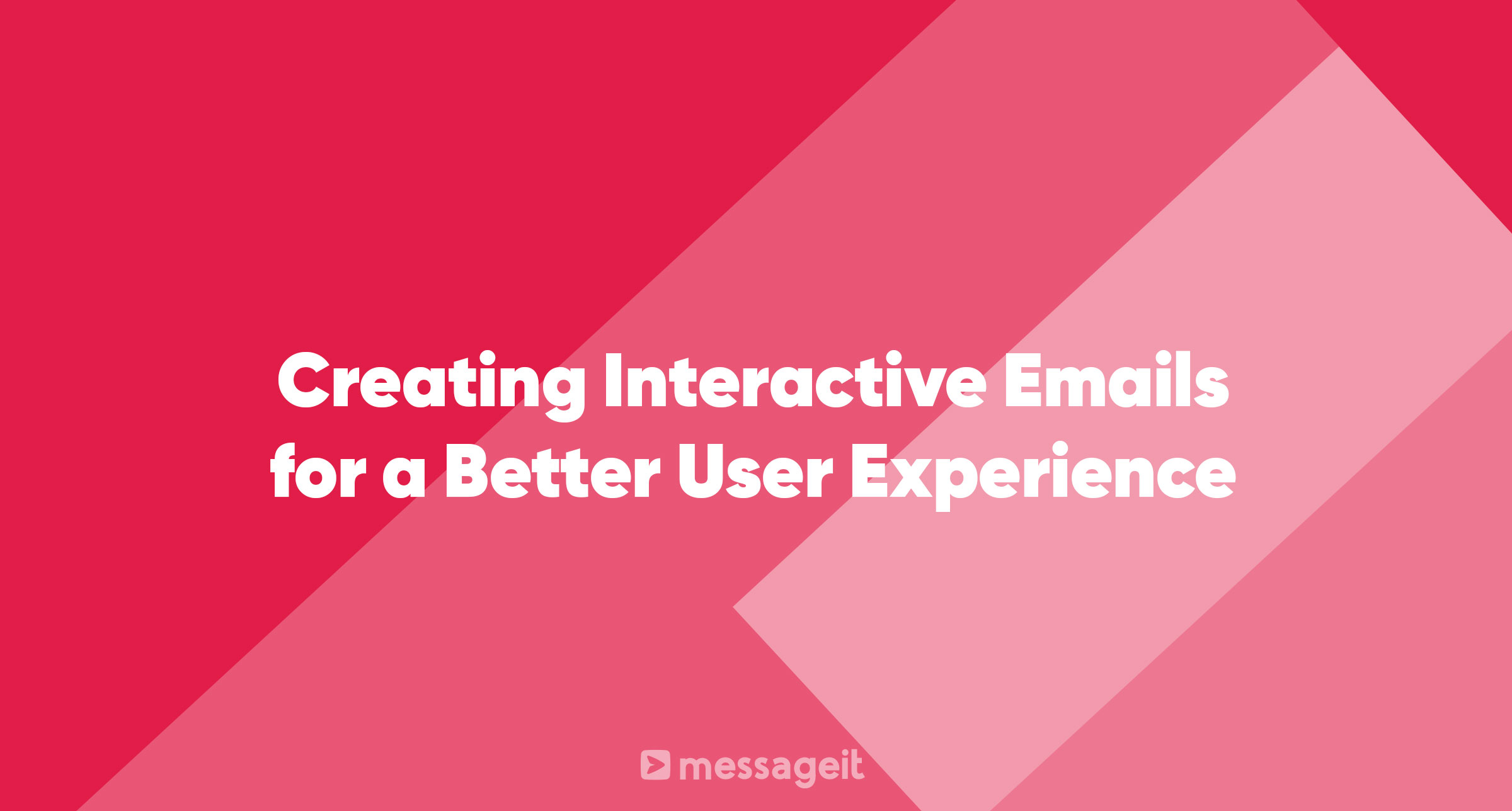In today's digital age, emails have become a staple in our daily lives. Whether it's for work, personal use, or marketing, emails are everywhere. But let's face it, most emails are... well, boring. They're often just plain text with a link or two. But what if we could change that? What if emails could be interactive, engaging, and fun? Enter interactive emails, the game-changer in the world of email marketing. Let's dive in!
What are Interactive Emails?
Interactive emails are not your typical static emails. They contain elements that users can interact with, such as buttons, forms, sliders, and even animations. Think of them as mini web pages inside your email. They're designed to engage the recipient and encourage them to take action, whether it's filling out a survey, watching a video, or making a purchase.
Why Go Interactive?
- Increased Engagement: Interactive emails can boost engagement rates. When users find something interesting or fun in their inbox, they're more likely to interact with it.
- Better User Experience: Instead of redirecting users to a website, they can take action directly within the email. This seamless experience can lead to higher conversion rates.
- Stand Out in the Inbox: Let's be honest, a fun, interactive email is more memorable than a plain text one.
How to Create Interactive Emails
1. Start with a Clear Goal
Before you jump into designing, ask yourself: What do I want the recipient to do? Whether it's signing up for an event, taking a quiz, or buying a product, having a clear goal will guide your design choices.
2. Choose the Right Tools
There are several email marketing platforms out there that support interactive elements. Platforms like Mailchimp, Campaign Monitor, and others have features or templates that make creating interactive emails a breeze.
3. Keep it Simple
While it's tempting to add all the bells and whistles, remember the KISS principle: Keep It Simple, Silly! Too many interactive elements can be overwhelming. Stick to one or two main interactions to keep your message clear.
4. Test, Test, Test
Not all email clients support interactive elements. Before sending out your email, test it on different platforms and devices to ensure it looks and works as intended.
5. Monitor and Adjust
After sending your email, monitor how recipients are interacting with it. Are they engaging with the interactive elements? Are they taking the desired action? Use this data to adjust and improve your future emails.
Ideas for Interactive Emails
Still not sure where to start? Here are some fun ideas to get your creative juices flowing:
- Quizzes and Polls: Engage your audience with a fun quiz or poll. Not only is it interactive, but it's also a great way to gather data about your audience.
- Image Carousels: Showcase multiple products or images in a swipeable carousel. It's a great way to display content in a visually appealing way.
- Countdown Timers: Creating urgency can drive action. Add a countdown timer for sales or events to encourage users to act quickly.
- Animated Buttons: Make your call-to-action pop with a subtle animation. It can draw attention and increase click-through rates.
- Feedback Forms: Instead of redirecting users to a separate page, embed a feedback form directly in the email. It's a convenient way for users to share their thoughts.
Best Practices for Interactive Emails
- Mobile-Friendly: With many users checking emails on their phones, ensure your interactive elements are mobile-friendly.
- Fallbacks: As mentioned, not all email clients support interactivity. Provide fallbacks (like static images) for those that don't.
- Clear Instructions: If you're introducing a new interactive element, guide your users. A simple "Swipe left to see more" can go a long way.
- Avoid Overloading: Too many interactive elements can slow down email loading times. Be mindful of the size and number of elements you include.
Wrapping Up
Interactive emails are a fantastic way to breathe new life into your email campaigns. They can boost engagement, provide a better user experience, and make your emails stand out. However, like all tools, they're most effective when used wisely. Keep your audience in mind, test thoroughly, and always aim to provide value.
So, the next time you're drafting an email, why not add a sprinkle of interactivity? Your recipients might just thank you for it!
